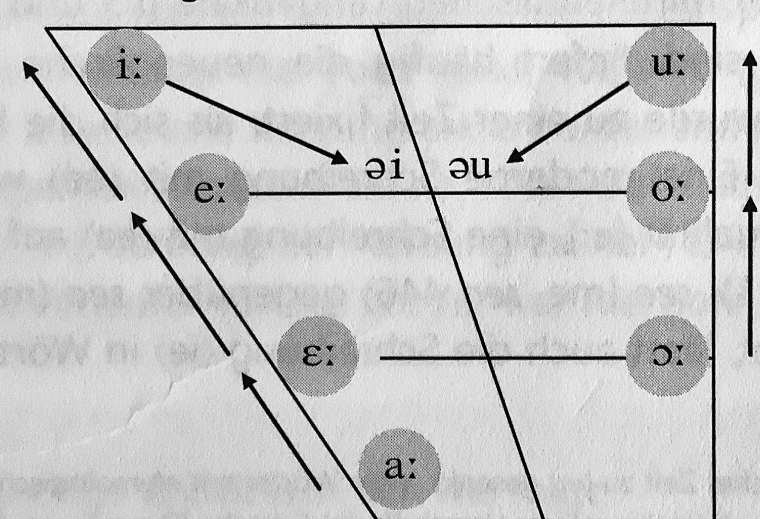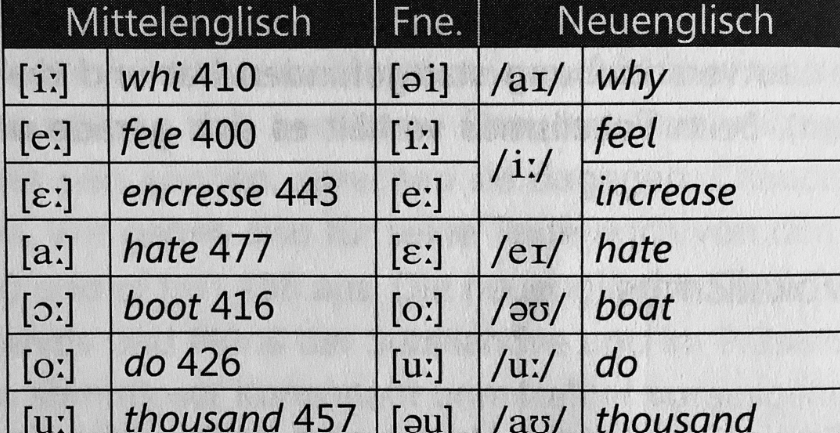Middle English Literature & Great Vowel Shift
1/8
There's no tags or description
Looks like no tags are added yet.
Name | Mastery | Learn | Test | Matching | Spaced |
|---|
No study sessions yet.
9 Terms
Great Vowel Shift

Great Vowel Shift: examples

Literature in London
Chaucer
John Gower: contemporary and rival
wrote in Latin, French and English
background: Kent
poet laureate
topics: great catastrophes of classical antiquity
style: dead serious
The Midlands
alliterate revival: comeback of Old English Poetry
Gawain and the Green Knight
→ Arthur - adventure of Gawain
→ author: anonymous “Pearl Poet”
Marte d’Arthure by Thomas Malory
→ Death of Arthur - end of round table
→ few fantastic elements
Piers Plowman by William Langlad
→ dream vision - autobiography
→ search for a truly Christian life
→ allegorical characters: Dowel, Dobet and Dobest
North
Cursor Mundi
→ 30.000 verses
→ history of the world from the Bible’s perspective
“The Brus” by John Babour
→ life of Robert the Bruce, Scottish king
→ battle of Bannockburn, Scottish war for independence
West
Harley lyrics: personal love lyrics?
“Brut” by Layamon/Lawman
→ histioriography: origin of British people
→ Brutus, son of Priam, flees from burning Troy to Britain
→ 16.000 verses - nearly no loan words
reconstructing ME pronounciation
comparative reconstruction
internal reconstruction
analysis of verse
analysis of spelling
comparative reconstruction
other languages and later stages of the same language to reconstruct the sound system
→ based on the idea that related languages/dialects share common ancestry
→ takes place through analysis of cognates
internal reconstruction
look at the language to reconstruct older examles of the language